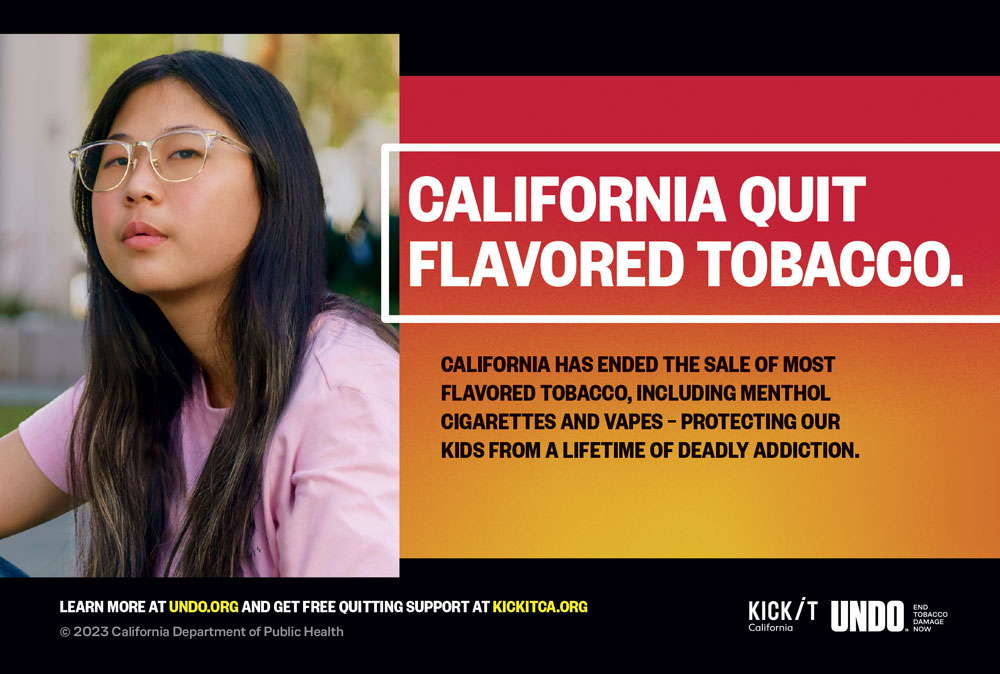Author: Dr. Pamela M. Ling, Professor at the School of Medicine, University of California, San Francisco
- Bio: Dr. Pamela Ling is an internal medicine specialist and primary care doctor. She has a special interest in caring for underserved urban populations. Ling’s research investigates the intersection of tobacco use, media and social marketing as relates to young people. Her work focuses on understanding how tobacco marketing encourages youth and young adults to begin using tobacco, and how to apply similar strategies to improve tobacco control programs.
Californians recently stood up to the tobacco industry and voted to end the sale of most flavored tobacco products, including menthol cigarettes and vapes. Voters upheld Senate Bill (SB) 793 by voting “Yes” on Proposition (Prop) 31, which prevents retailers from selling these products, and makes it harder for Big Tobacco to prey on and profit off of kids and other targeted communities.
California’s new flavored tobacco law marks a significant victory for California’s Asian American communities, especially young Asian Americans, as Big Tobacco has a deceptive strategy of making tobacco seem like a normal part of our culture,, and has been effective in getting young Asian Americans to vape.

The tobacco industry has long considered the Asian American population a “potential gold mine” due to high rates of smoking in Asia and the Pacific, thereby labeling this community as being “predisposed toward smoking.” For decades, Big Tobacco has placed more advertising on billboards and inside stores in neighborhoods where people who predominantly identify as Asian American shop, and often co-opt cultural holidays like Lunar New Year to masquerade their multi-million-dollar marketing machine as support and celebration of these unique cultures and communal experiences.,,
Looking back to what got us to this momentous point, there is no denying that the tobacco industry has reduced their view of the vibrant and diverse Asian Californian communities to only one thing — profits.
The tobacco industry targets Asian teens and young adults by advertising their products with flavors like lychee, guava, and passion fruit, and sponsoring cultural events important to Asian communities. They also design vapes as sleek and high-tech specifically to appeal to tech savvy young people. These tactics work: among Asian youth in California who report currently using flavored vapes, 73% indicated that fruit was the flavor they used most often. The fresh, sweet taste is a trap the tobacco industry uses to get youth hooked on tobacco and once hooked, they can battle that addiction for life.
When it comes to young people and the dangers of vaping, what’s important to know is that vapes can harm the body and mind. Not only are flavors a trap but vapes have been engineered by the tobacco industry to be as addictive as possible. Nicotine, which is as addictive as heroin, is poison for the developing brain, and rewires it to crave more. Nicotine can also cause lasting damage to adolescent brains — increasing anxiety, irritability, and mood swings. Vaping may also put young people at higher risk of chronic lung issues such as asthma and bronchitis.
Ending the sale of flavored tobacco brings us significantly closer to creating a California in which all communities and future generations are free from the tobacco industry’s predatory, and deadly, hold. Anyone looking to quit using flavored vapes, can text “KICK TOBACCO” to 66819 or visit KickItCA.org for free support.































